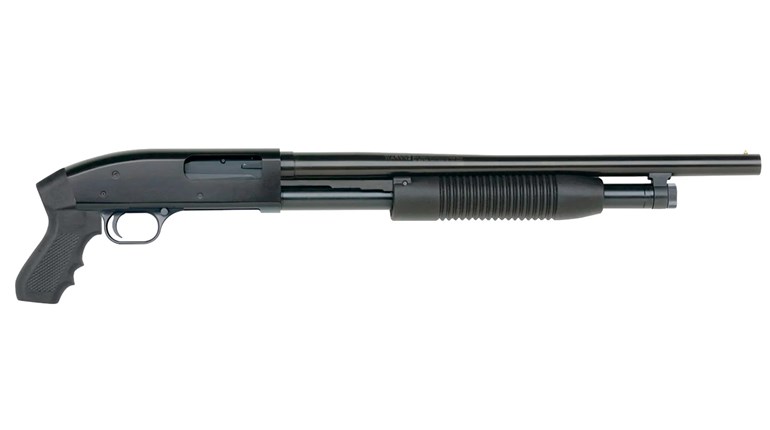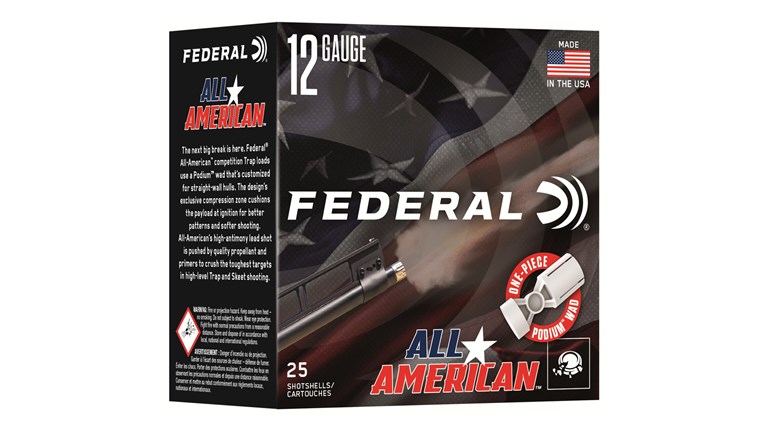
I was pondering the ice on my decoys when out of the fog emerged a lone black duck. With much of the waterway iced up, there were few spots for the dabbler to rest, the small opening in which I'd tossed a modest spread of dekes being one of them. He pitched right in and I folded him. My hunting buddy and I didn't have a dog that day, so we paddled our canoe out to fetch the bird. I handed my Winchester Super X2 to my buddy as we neared the duck. What happened next is the subject of much debate. We agree on the following: One of us leaned too far to the side and tipped the canoe. My Super X2 broke my buddy's fall as he splashed into the shallow water and thick mud. I disassembled the gun and used a stick to knock thick slop from the barrel. The gas piston's valves were caked in mud. I cleaned them as best I could, but I assumed my filthy gun was now a single-shot. Somewhat to my amazement, it cycled perfectly, enabling me to take three more ducks that day. Needless to say, I was sold on the quality of the gas piston in my Super X and its cousin, the Browning Gold.
And now Browning says it's improved upon the reliable SX/Gold gas piston with an updated design for its new flagship gas-operated, semi-auto shotgun, the Maxus. The company makes a lot of claims about what it calls the "Power Drive Gas System," but I think its increased stroke length is the most notable change; the Maxus' guide rod travels 20 percent farther than the Gold's. According to a Browning engineer, that's improved the Maxus' ability to cycle light loads and allowed Browning to produce something nobody has before-a 3½-inch 12-gauge rated for 1-ounce target loads. My tests using a multitude of shells confirm the rating. I had just one failure to feed in 450 rounds. Browning also says the piston's larger exhaust ports should help expel gas more quickly and improve performance with heavy loads. That's all well and good, but I haven't known too many modern shotguns to struggle with heavy loads. Again, it's the fact that Browning has created a 3½-inch gun that will function reliably with 1-ounce target loads that's most significant.
Upon first glance at the Maxus, you'll notice a departure from the Gold's fore-end design. The magazine cap is strikingly absent, replaced by an Anson and Deeley-like latch that sits flush in the underside of the fore-end. I found that this forearm latch not only affords fast disassembly for cleaning, but gives the gun a streamlined look that I like. The design additionally provides a lighter, more slender fore-end. Weight is often too far forward on magnum 12-gauges due to their robust fore-ends; the Maxus' balance point is farther back than many magnums (including the Gold), better centering it between the hands. The fore-end is so slim, in fact, I worried it wouldn't provide sufficient purchase for hunters with large hands, but, being a big-pawed hunter myself, I found it's actually quite ergonomic.
Fore-end removal grants access to the turn-key magazine plug, a neat little invention. Insert any vehicle key into the end of the plug, then turn and remove it. The plug is not held under spring pressure and as such it's one of the fastest and easiest plugs I've ever removed/inserted.
So, those are the key ways in which the Maxus differs from its predecessors, but make no mistake-this gun is distinctly Browning. As on the A-5 and Gold, the Maxus has a magazine cut-off switch located on the left side of the receiver. Just flip the cut-off lever and you can shuck a shell from the chamber without unloading the magazine. There are instances in hunting when that can be convenient.
The Maxus also has what Browning's been referring to as "speed load" for the last few decades. With the bolt locked back, simply insert a shell into the magazine and the bolt automatically slides home to chamber it. Subsequent inserted shells are held within the magazine. New for the Maxus is "speed unload"-lift the shell carrier and press a tab next to the magazine, and the shells are literally spit from the magazine tube. The idea for designing a semi-auto shotgun that unloads without working the bolt is not new, however, this is one of the most user-friendly I've tested. Unlike other shotguns, the Maxus' unloading tab positioned my finger in a manner so it didn't get pinched or otherwise interfere with ejection.
The bulk of my field-test took place during three days of pheasant hunting. If you like a lightweight, semi-auto upland gun, then the Maxus should interest you. It carries easily for prolonged jaunts and performed reliably, two things I look for most in a small-game gun. The bolt handle, which pops out so the bolt can be removed for cleaning, was a tad loose on the prototype I took hunting. In fact, the handle popped off the bolt during my hunt and I lost it, but Browning assures me the problem was corrected before the guns went into full production. Based on the production guns I've seen, I believe it has indeed been rectified.
With the introduction of the Maxus, it's surmisable that the Gold is being phased out (if you visit www.browning.com you'll find that only 10-gauge Golds are currently offered), but before you mourn too hard, remember that the Maxus preserves Browning Gold and A-5 hallmarks while adding some cool innovations of its own. I think this is a gun that Browning fans are really going to like.
Action Type: semi-automatic shotgun
Gauge: 12
Chamber: 3"; 3½" (tested)
Barrel: 26", 28" (tested)
Sights: white bead
Safety: crossbolt
Stock: synthetic; length of pull-14¼"; drop at heel-2"; drop at comb-1¾"
Overall Length: 49¼" (w/ 28" barrel)
Weight: 6 lbs., 15 ozs.
Metal Finish: blued; Mossy Oak Duck Blind camo
Extras: three choke tubes (IC, M, F), shim kit for changing cast/drop
MSRP: $1,200-$1,500




































